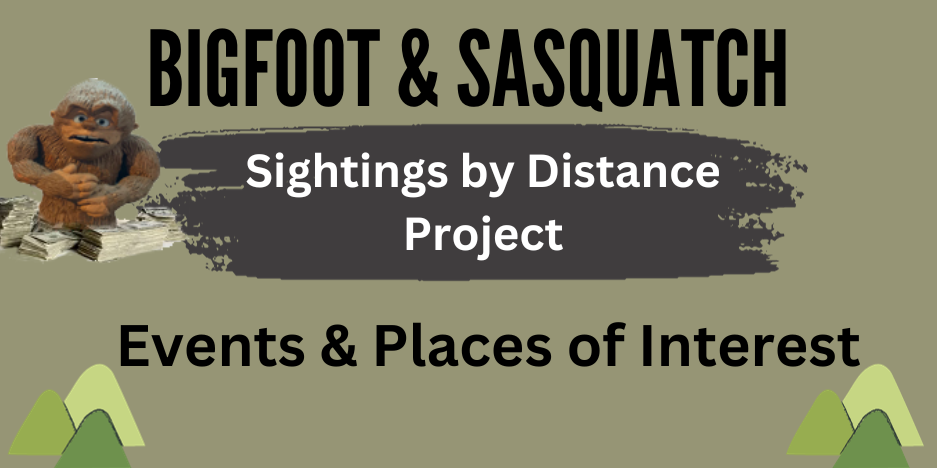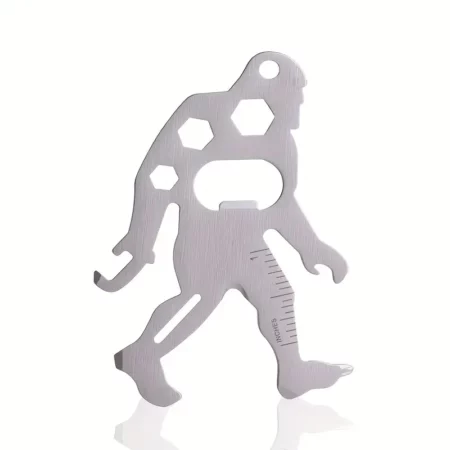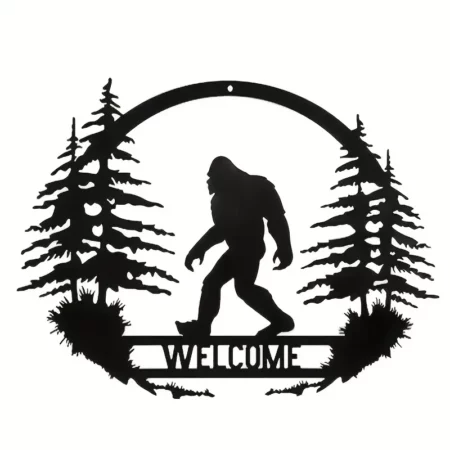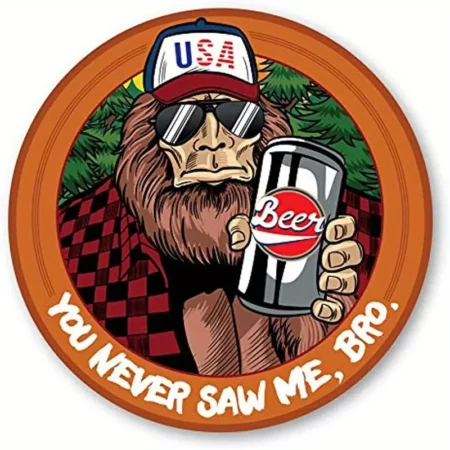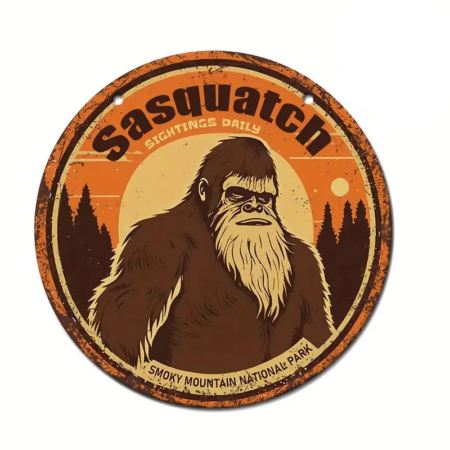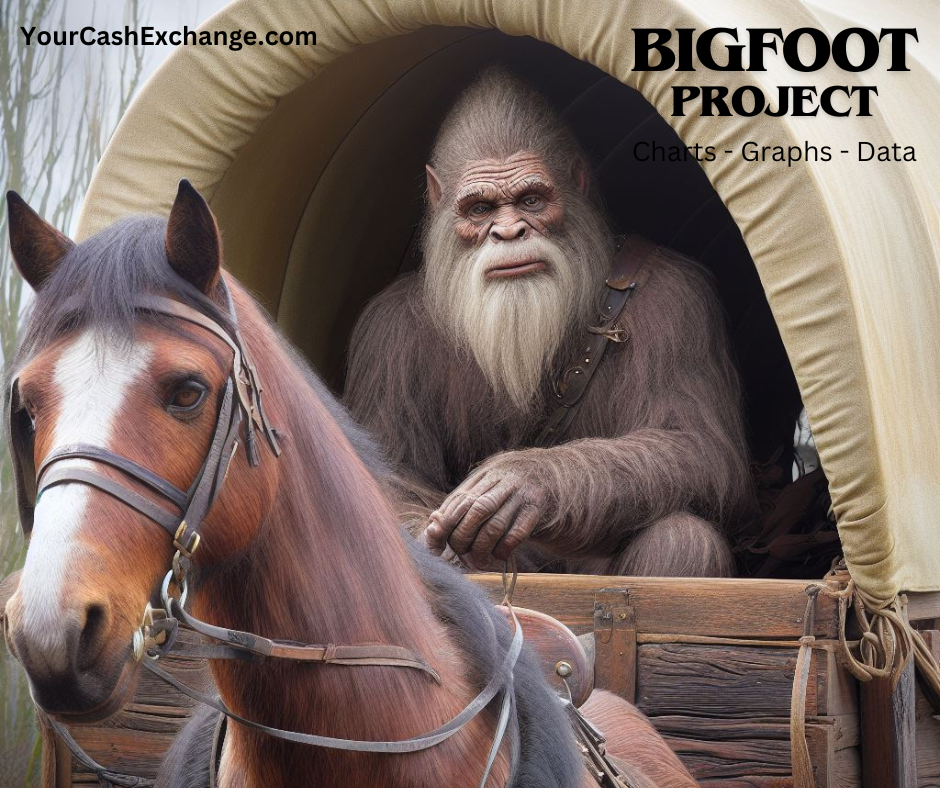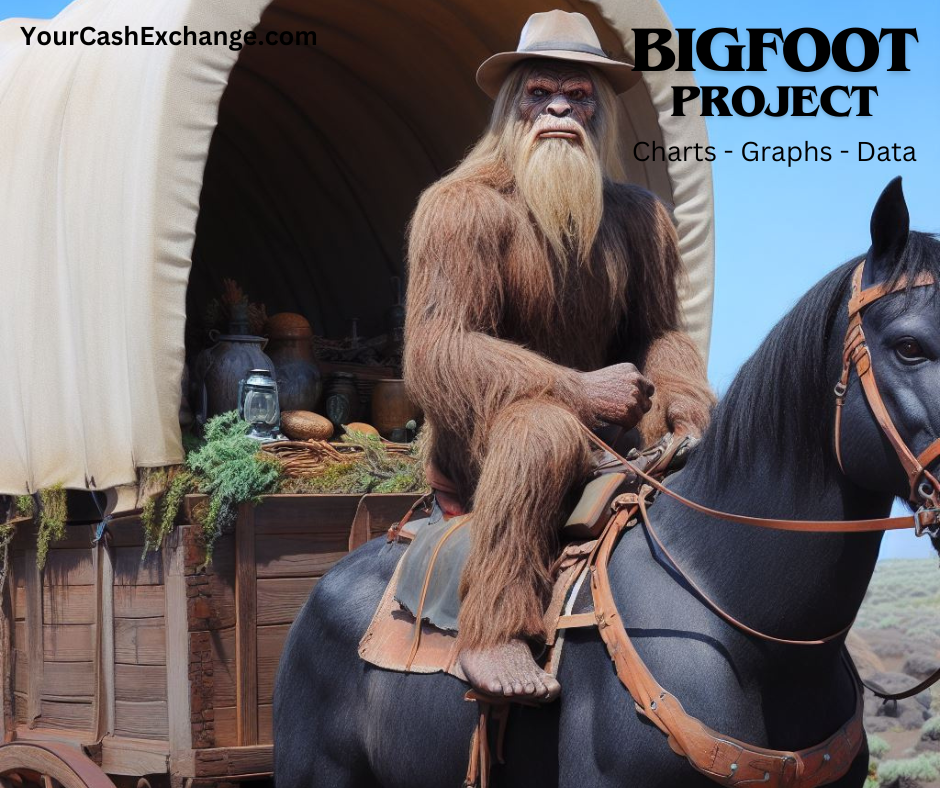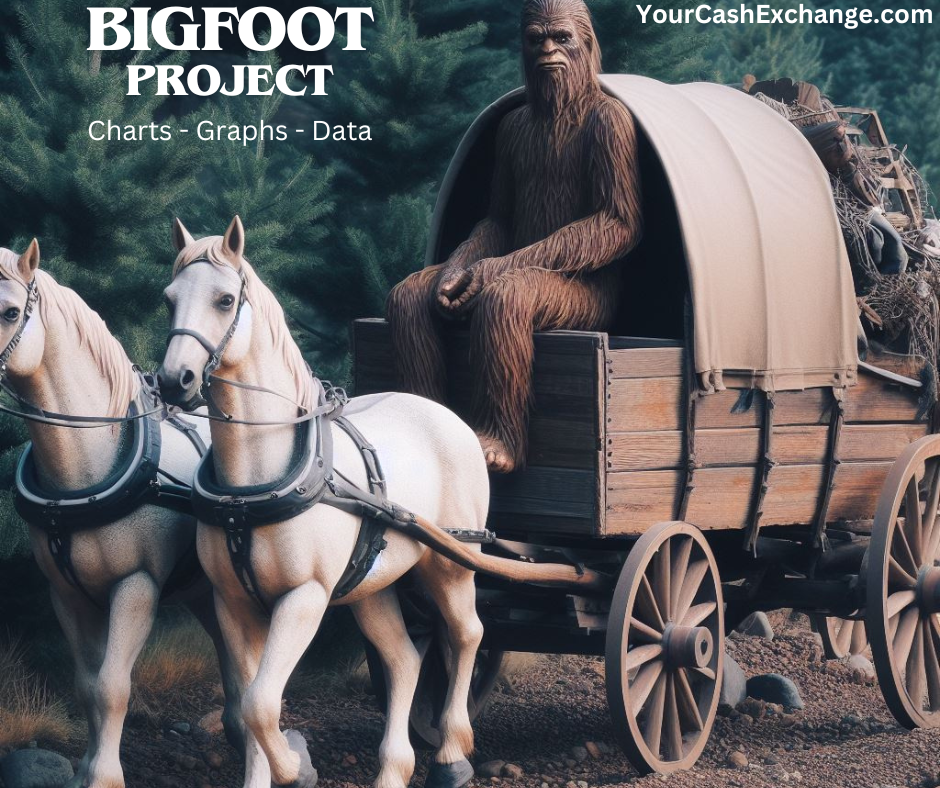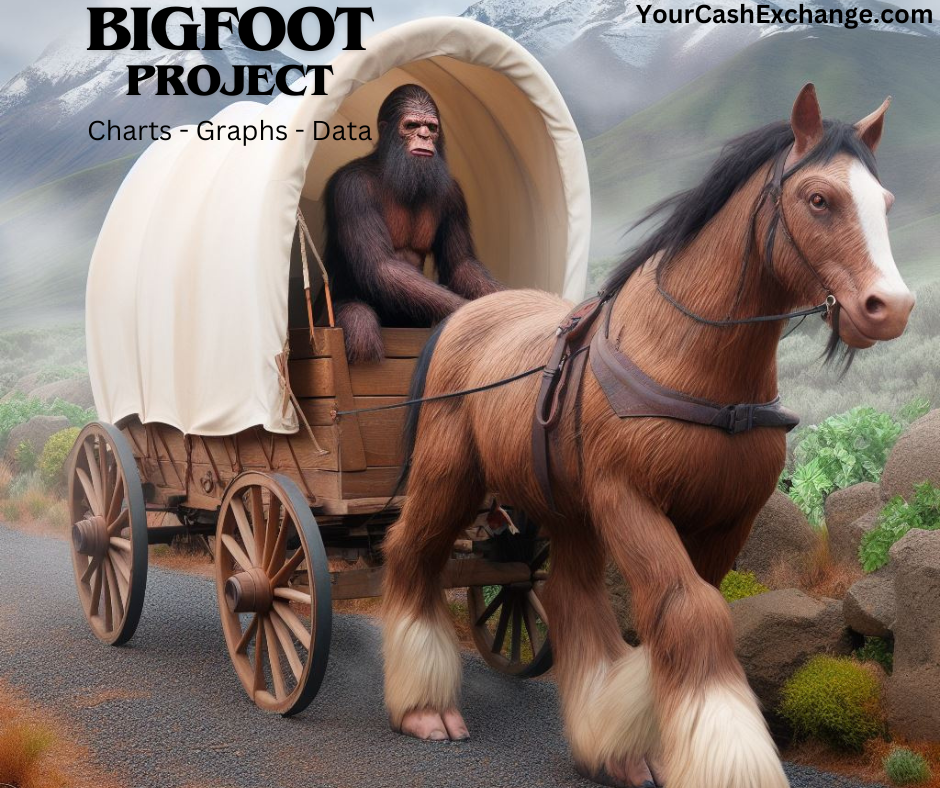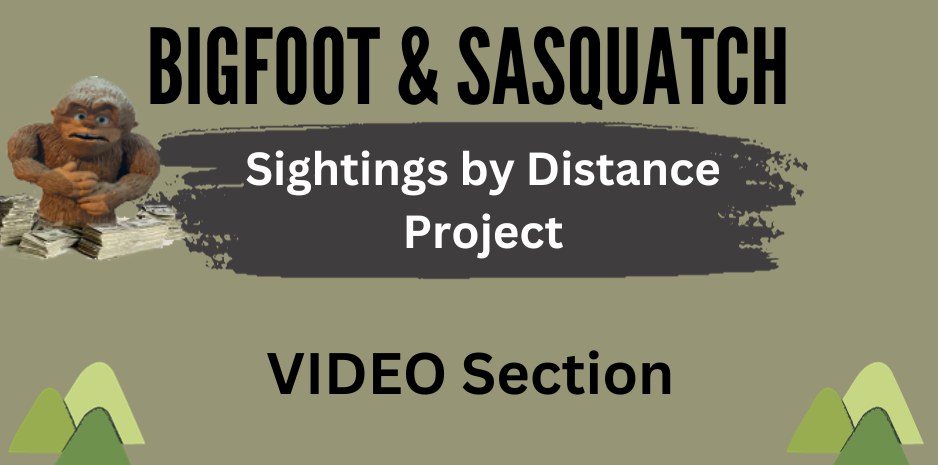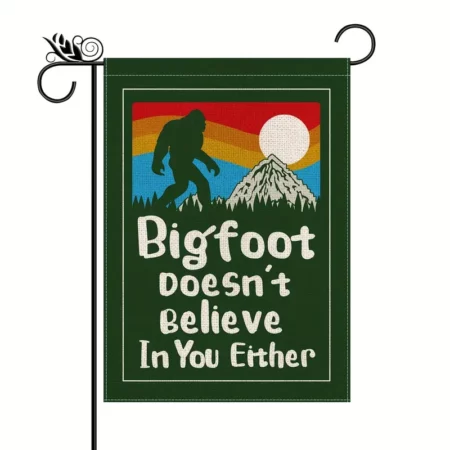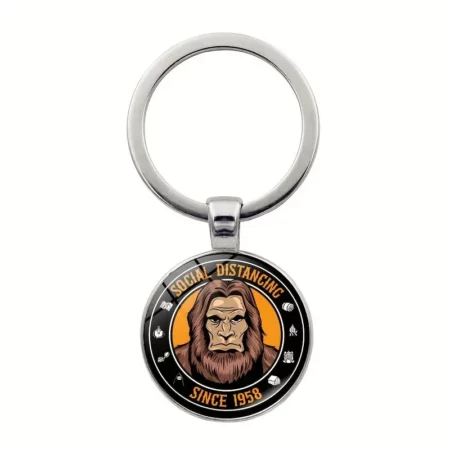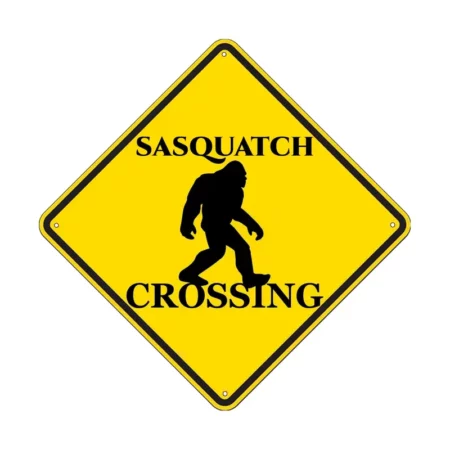Here is a story that I wrote about a Bigfoot wagon train on the Oregon Trail moving west across the United States in the late 1800s:
The Bigfoot Wagon Train
They were a band of outcasts, shunned by both humans and animals alike. They were the Bigfoots, the hairy giants of the woods, who had lived in hiding for centuries. But now, they had a dream. A dream of a new home, a new life, a new freedom. A dream of Oregon.
They had heard of the Oregon Trail, the route that thousands of human settlers had taken to reach the fertile lands of the Pacific Northwest. They had seen the wagons, the horses, the cattle, and the people, passing by their hidden camps and caves. They had felt the curiosity, the envy, and the longing, to follow them to the promised land.
But they knew they could not join them. They knew they would be met with fear, hatred, and violence, if they ever revealed themselves to the humans. They knew they had to find their own way, their own path, their own destiny.
So they gathered their belongings, their families, and their courage, and set out on their own wagon train. They had built their wagons from the wood and metal they had scavenged from abandoned human settlements and mines. They had trained their horses from the wild herds they had befriended and tamed. They had packed their supplies from the berries, nuts, and roots they had harvested and dried. They had prepared their weapons from the stones, bones, and hides they had fashioned and sharpened.
They were ready to face the dangers, the hardships, and the unknowns, of the long and perilous journey. They were ready to cross the plains, the rivers, the mountains, and the deserts, that lay between them and their dream. They were ready to fight, to survive, and to thrive, as a proud and free people.
They were the Bigfoot wagon train, and they were on their way to Oregon.
The Bigfoot Wagon Train (Part 2)
They had reached the Snake River, one of the most difficult obstacles on the Oregon Trail. The river was wide, deep, and swift, with rapids, rocks, and sandbars. The Bigfoots had two options: to ford the river, or to take a ferry.
They decided to ford the river, as they did not trust the human ferry operators, who charged exorbitant fees and often cheated or robbed their customers. They also did not want to risk being seen or attacked by the humans, who were hostile and suspicious of strangers.
They waited for a calm and shallow spot, where the river was about three feet deep and 200 feet wide. They tied ropes to their wagons and horses, and formed a line across the river. They hoped to use their strength and teamwork to pull each other through the water.
But they had underestimated the power and danger of the river. As soon as they entered the water, they felt the strong current pushing them downstream. They struggled to keep their balance and hold on to their ropes. They heard the screams and splashes of their horses, who were terrified and panicked by the water.
Then, disaster struck. One of the wagons hit a rock and tipped over, spilling its contents and passengers into the river. The Bigfoots in the wagon tried to swim to the shore, but some of them were swept away by the current. The others tried to help them, but they also risked being dragged down by the water.
The Bigfoots on the shore watched in horror and helplessness, as they saw their friends and family drowning or disappearing in the river. They shouted and cried, but they could not do anything to save them. They felt a surge of anger and sadness, as they realized they had lost some of their own.
They finally managed to cross the river, but at a terrible cost. They had lost six of their people, four of their horses, and two of their wagons, along with their food, clothes, and tools. They had barely enough to survive and continue their journey.
They mourned and buried their dead, and tried to salvage what they could from the river. They prayed and thanked the spirits for their protection and guidance. They vowed to never forget their fallen comrades, and to honor their memory by reaching their dream.
They were the Bigfoot wagon train, and they were still on their way to Oregon.
The Bigfoot Wagon Train (Part 3)
They had crossed the Snake River, but they had not escaped the danger. They still had to face the Rocky Mountains, the highest and most rugged range in North America. They knew they had to cross them before the winter came, or they would be trapped by the snow and cold.
They followed the trail that the human settlers had carved through the mountains, hoping to find a pass that would lead them to the other side. They had heard of the South Pass, the lowest and easiest route, but they also knew it was the most crowded and guarded by the humans. They decided to look for another pass, one that was less known and less traveled.
They found one, but it was not what they had hoped for. It was a narrow and steep path, with cliffs, rocks, and trees on both sides. It was barely wide enough for their wagons, and it looked like it had not been used for a long time. They had no choice but to take it, as they had no time to waste.
They started to climb the pass, but they soon realized it was a mistake. The weather changed quickly, and a sudden winter storm hit them. The wind blew fiercely, the snow fell heavily, and the temperature dropped rapidly. They could not see more than a few feet ahead, and they could not hear anything but the howling of the wind.
They tried to keep moving, but it was too hard. The snow piled up on the ground, making it slippery and uneven. The wagons got stuck, the horses got tired, and the Bigfoots got cold. They had to stop and make camp, hoping the storm would pass soon.
But it did not. It lasted for days, and it only got worse. The snow covered their wagons, their horses, and their supplies. The cold froze their bodies, their limbs, and their spirits. They had no fire, no food, no water, and no hope.
They started to die, one by one. Some of them froze to death, some of them starved to death, and some of them gave up and killed themselves. They did not even have the strength to bury their dead, or to mourn their loss. They just lay there, waiting for their end.
They were the Bigfoot wagon train, and they were not going to make it to Oregon.
Here is a continuation of the story that I wrote about a Bigfoot wagon train on the Oregon Trail moving west across the United States in the late 1800s after recovering from the winter storm they finally made it to Oregon and the promised land:
The Bigfoot Wagon Train (Part 4)
They had survived the winter storm, but barely. Out of the 50 Bigfoots who had started the journey, only 12 were left. They had lost their wagons, their horses, and most of their supplies. They had nothing but their clothes, their weapons, and their will.
They had to keep going, or they would die. They had to reach Oregon, or they would fail. They had to fulfill their dream, or they would regret.
They left the pass, and continued their trek through the mountains. They faced more challenges, such as avalanches, wolves, and human hunters. They fought, they ran, and they hid. They did whatever it took to survive and advance.
They finally reached the end of the mountains, and saw the valley below. They saw the green fields, the blue rivers, and the white clouds. They saw the beauty, the bounty, and the peace. They saw Oregon.
They felt a surge of joy, relief, and gratitude. They had made it. They had reached their destination. They had achieved their goal.
They descended the valley, and looked for a place to settle. They found a secluded spot, near a forest and a lake. They built their cabins, their farms, and their fences. They planted their crops, raised their animals, and hunted their game. They created their community, their culture, and their identity.
They lived in harmony, with themselves, with nature, and with the spirits. They lived in freedom, from fear, from oppression, and from persecution. They lived in happiness, with love, with friendship, and with hope.
They were the Bigfoot wagon train, and they had found their home in Oregon.

